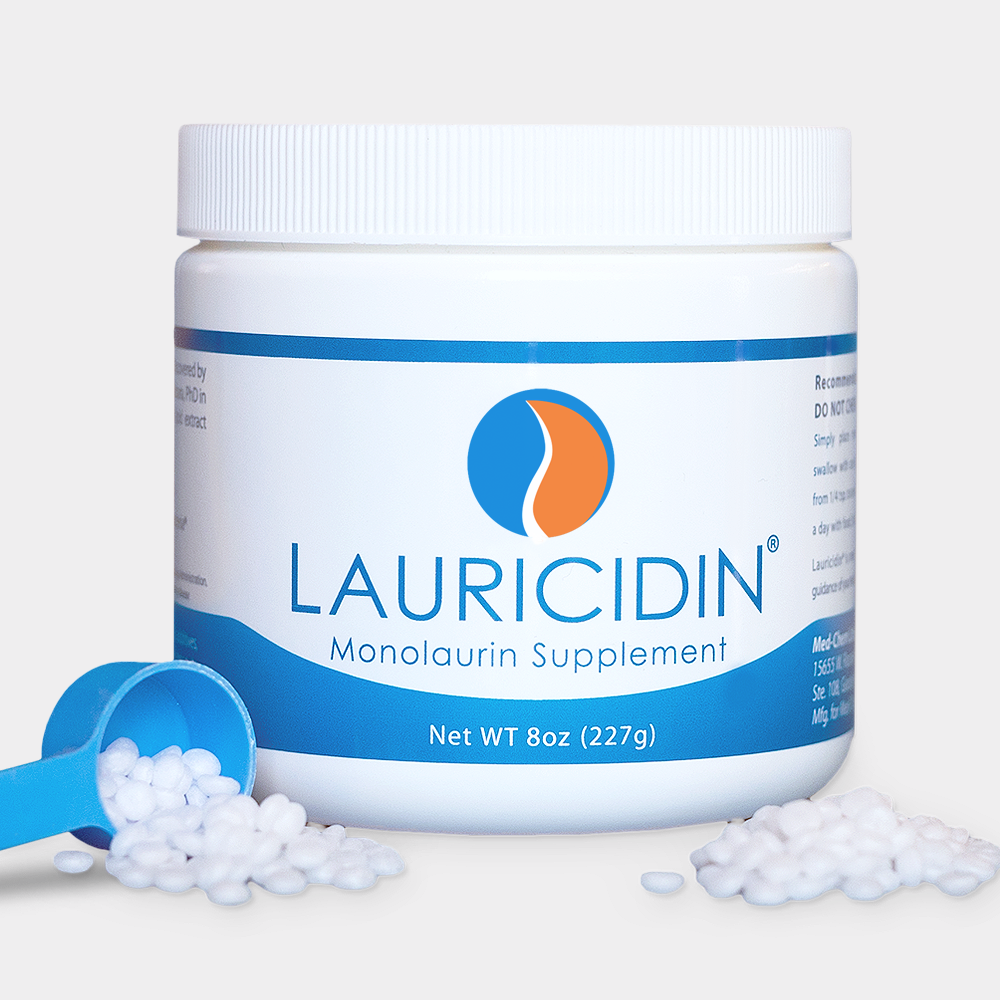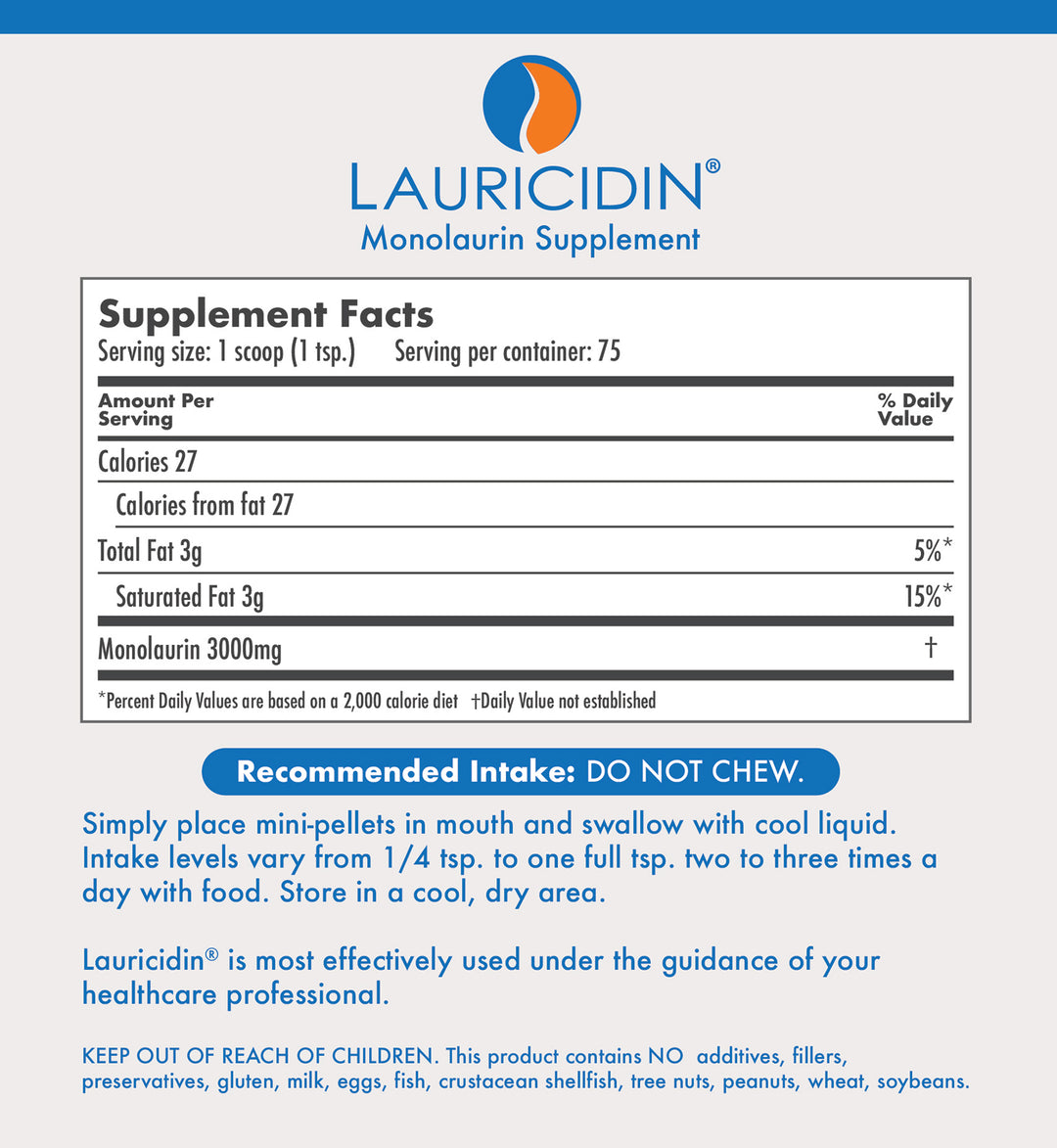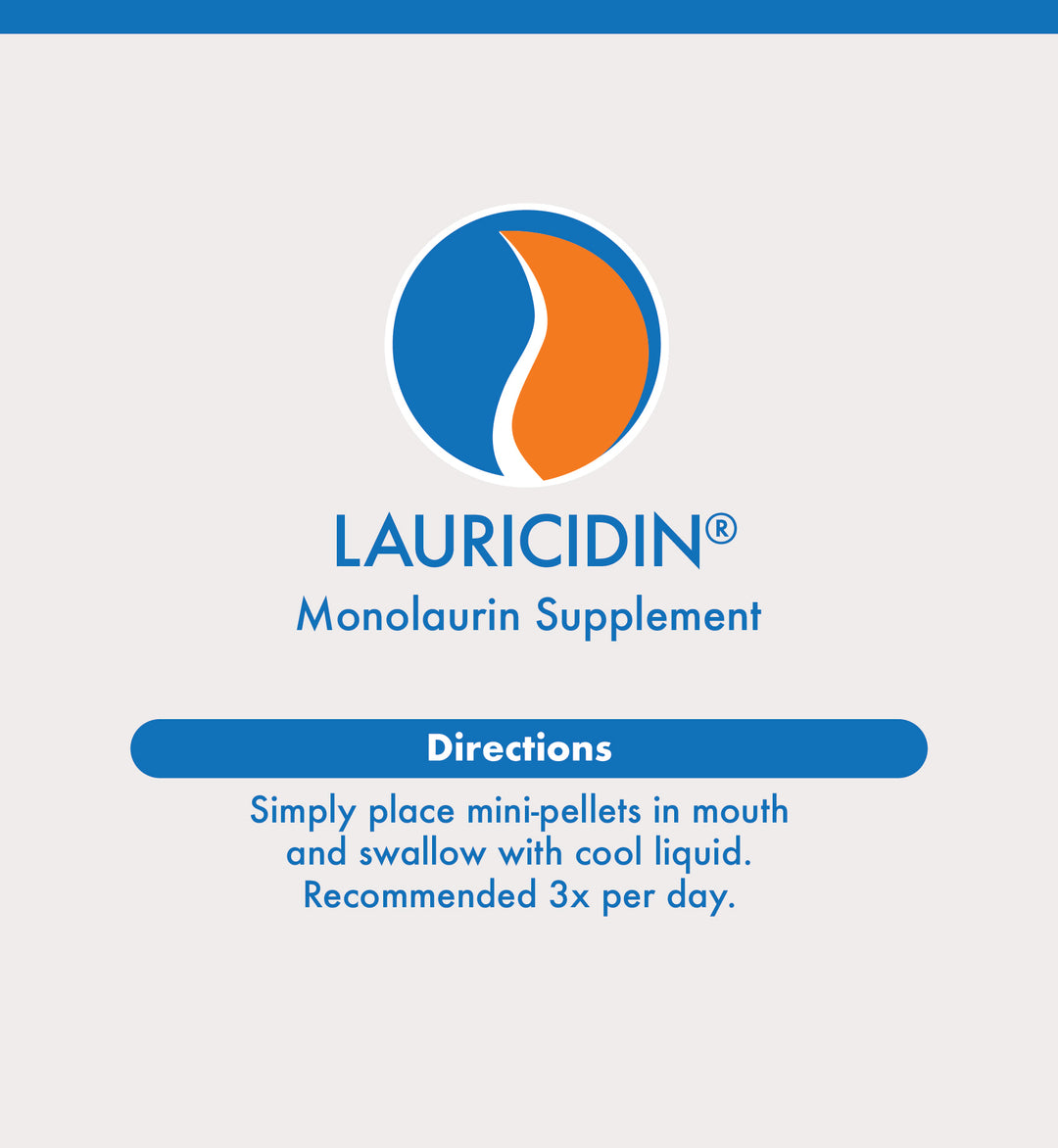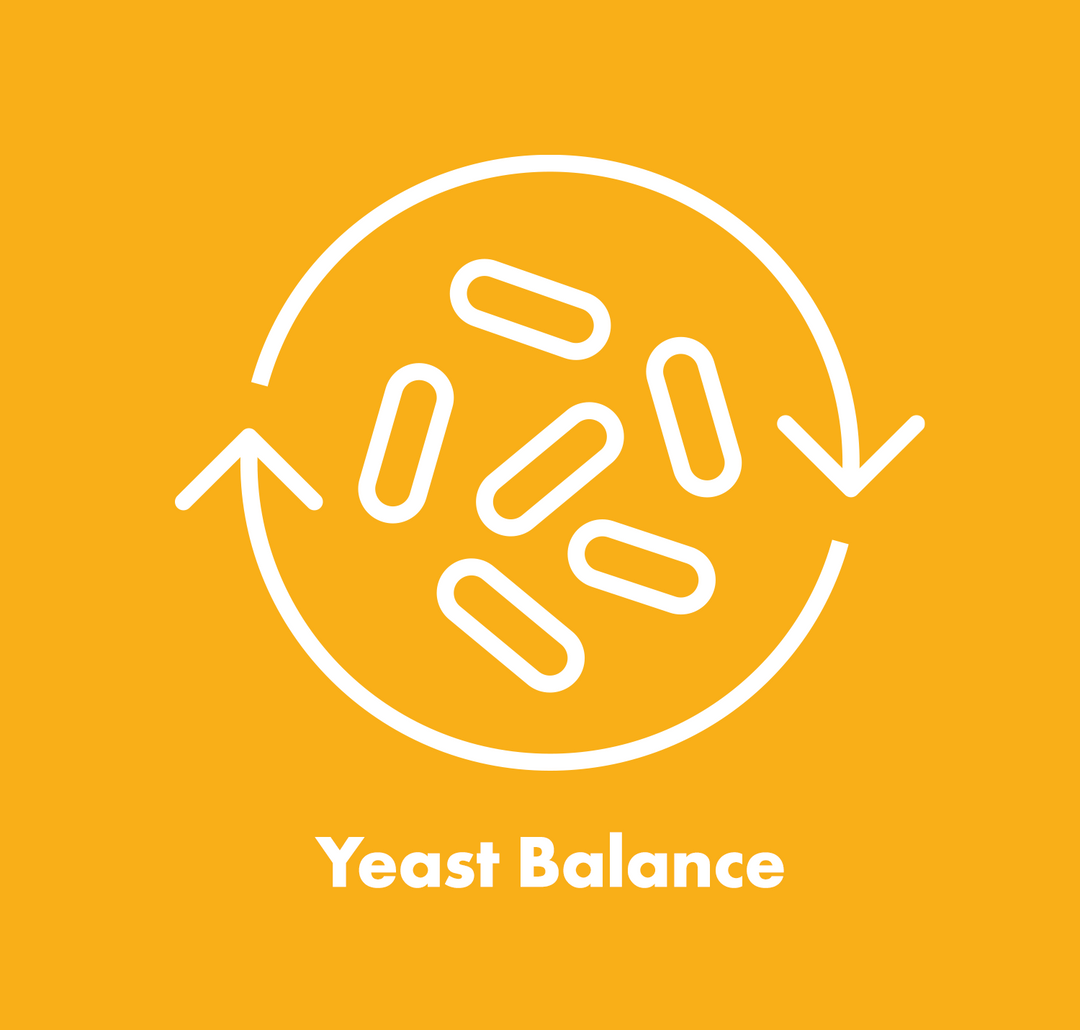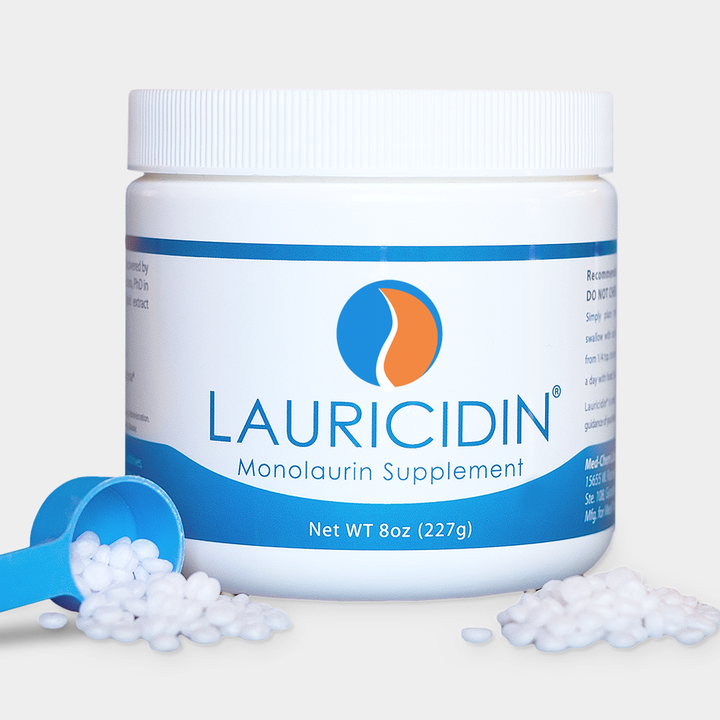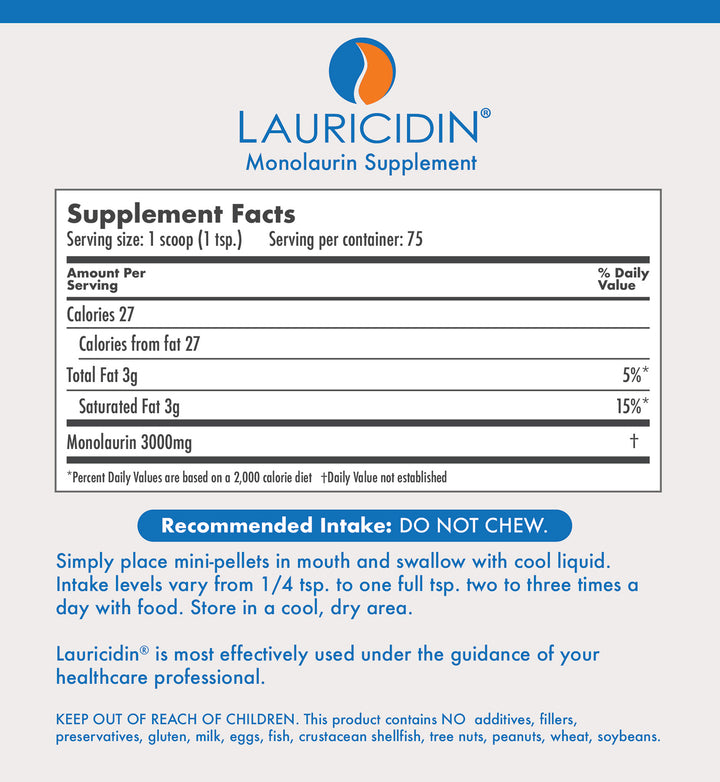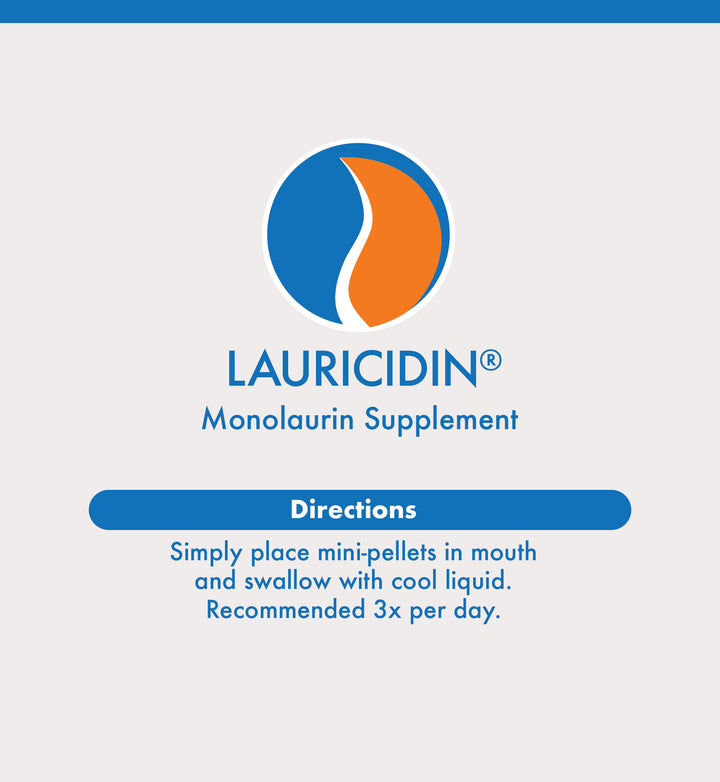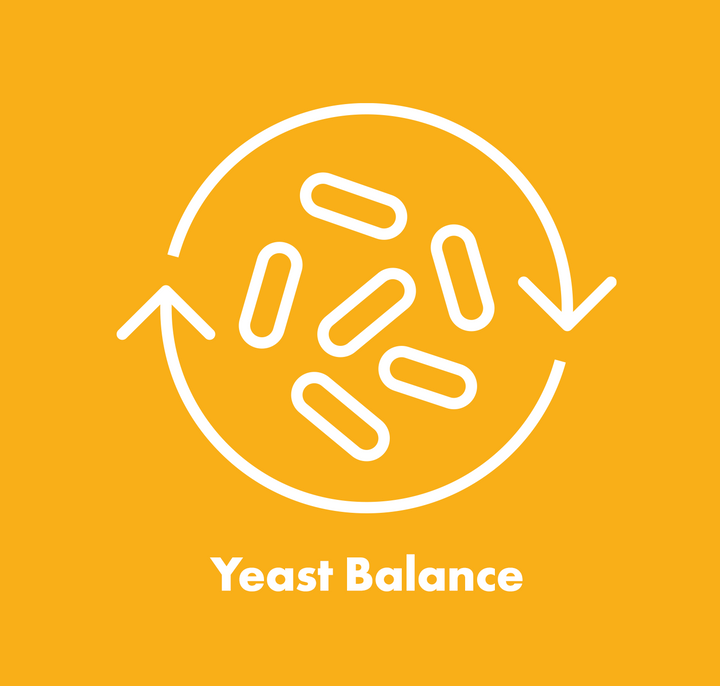MCT oil and Lauricidin® (a pure form of monolaurin) are both derived from coconuts, yet they serve different purposes within health and wellness routines. MCT oil is best known for its quick energy support and potential cognitive benefits, while Lauricidin® is recognized for supporting overall immune and digestive balance. This article sheds light on why lauric acid (the building block of monolaurin) is typically excluded from standard MCT oil and explores how these products can fit into your daily regimen.
- MCT oil provides quick energy due to its short-chain fatty acids, while Lauricidin® (monolaurin) supports immune and gut health using lauric acid.
- MCT oil is for fast fuel and cognitive support, typically lacking lauric acid (C12), whereas Lauricidin® offers concentrated monolaurin for daily wellness and balance.
- Coconut-derived MCT oil focuses on C8 and C10 acids for energy, and Lauricidin® provides monolaurin (from C12) for immune resilience.
Table of Content
What is MCT Oil?
MCT stands for Medium-Chain Triglycerides , which are fatty acids generally containing 6–10 carbon atoms in their structure:
C6: Caproic Acid
In terms of its properties and metabolism, caproic acid has some distinct characteristics. It is more water-soluble than longer-chain fatty acids due to its shorter carbon chain.
C8: Caprylic Acid
This quick energy source can be beneficial for individuals following ketogenic or low-carbohydrate diets, as ketones can fuel the brain and body. Caprylic acid is also being researched for its potential antimicrobial properties and its role in supporting gut health.
C10: Capric Acid
Capric acid is metabolized differently by the body compared to long-chain fatty acids. It is more easily digested and absorbed, traveling directly to the liver where it can be rapidly converted into energy or ketones. Some research suggests that capric acid possesses antimicrobial and antifungal properties, potentially disrupting the cell membranes of certain bacteria and fungi. It has also been investigated for its potential role in supporting gut health and immune function.
Key Points About MCT Oil
Often used in bulletproof coffee or smoothies for fast-acting energy.
May help promote feelings of satiety.
Lacks lauric acid (C12), the precursor to monolaurin.
Standard MCT oils often isolate these shorter-chain fatty acids from coconut or palm oil, because they’re known to be quickly absorbed by the body, converting into usable energy efficiently. Many people take MCT oil as a dietary supplement for potential mental clarity and to support weight management goals.
What is Lauricidin® (Monolaurin)?
Lauricidin® is a concentrated form of monolaurin , which is derived from lauric acid (C12) . While lauric acid itself occurs naturally in coconut oil (roughly 40–50% of the coconut’s fatty acid content), monolaurin is the mono-glyceride of lauric acid. Essentially, it’s what your body can convert lauric acid into.
Why It’s Unique :
-
Focused Support : By delivering pure monolaurin, Lauricidin® specifically supports a balanced internal environment, especially in the gut.
-
Time-Tested: Dr. Jon Kabara developed Lauricidin® over 50 years ago, harnessing fatty acid research to isolate monolaurin in a stable pellet form.
- Daily Use : Many people use Lauricidin® for year-round immune support and to help maintain healthy microbial balance.

Why Lauric Acid Isn’t in Typical MCT Oil
The goal of most MCT oil manufacturers is to isolate shorter-chain fatty acids (C8, C10) rather than C12 (lauric acid). The reasoning includes:
-
Absorption & Energy: C8 and C10 are metabolized more rapidly, making them appealing for quick energy.
-
Purification Process : Filtering out lauric acid can create a more consistent, flavor-neutral oil.
-
Market Demand : Fitness and keto communities often seek these shorter MCTs for fast ketone production.
As a result, lauric acid —which is converted to monolaurin —is largely absent in many commercial MCT oils.

Comparing MCT Oil and Lauricidin®
| Aspect | MCT Oil | Lauricidin® (Monolaurin) |
|---|---|---|
| Main Components | Caprylic (C8), Capric (C10) acids | Concentrated monolaurin (from lauric acid, C12) |
| Primary Benefits | Quick energy, potential cognitive support, satiety | Maintaining immune balance, gut wellness, overall resilience |
| Usage | Mixed in coffee, smoothies; bulletproof-style diets | Small pellet form, swallowed with water; daily regimen |
| Taste/Flavor | Usually flavorless or mild coconut taste if unrefined | Neutral pellets without strong coconut flavor |
| Target Audience | Those seeking fast fuel (keto dieters, athletes) | Individuals focusing on balanced wellness, immune support |
All the Benefits of C-12, In Concentrated Form!

Potential Synergies
While each supplement offers unique advantages, some people choose to include both MCT oil and Lauricidin® in their daily wellness routines:
- Energy + Balance: Use MCT oil for a quick energy boost in the morning, then Lauricidin® throughout the day to maintain internal equilibrium.
-
Diverse Approach: Combining different coconut-derived products can provide a broader spectrum of fatty acid benefits.
- Personalization : Wellness is individual; experimenting with both can help discover what best suits your lifestyle.
Conclusion
MCT oil and Lauricidin® are two distinct coconut-based supplements with different core benefits and usage methods. MCT oil provides a source of quick energy due to its shorter-chain fatty acids, while Lauricidin® focuses on harnessing the power of lauric acid (C12) to provide monolaurin, supporting a balanced gut and overall wellness.
By understanding these differences, you can make more informed decisions about which supplement, or combination of supplements, best suits your personal health goals—whether you’re aiming for sharper focus, enhanced daily resilience, or a well-rounded approach to holistic wellness.
"Pure monolaurin supports immune balance and gut health, more so than standard MCT oil, focusing on high potency and quick and clean absorption. " - Dr. Ryan Jones
Frequently Asked Questions about MCT Oil and Lauric Acid (C12)
What is the main difference between MCT oil and lauric acid (C12)?
MCT (Medium-Chain Triglyceride) oil and other oils differ primarily in their fatty acid composition and chain length. MCT oil is a concentrated source of medium-chain fatty acids, typically caprylic acid (C8) and capric acid (C10), which are metabolized differently by the body compared to the long-chain fatty acids found in most other dietary fats. This unique structure allows for quicker absorption and conversion into energy, potentially offering benefits such as increased satiety, improved cognitive function, and enhanced athletic performance.
In contrast, most other dietary oils, like olive oil, coconut oil (which contains both medium and long-chain triglycerides), and avocado oil, are predominantly composed of long-chain triglycerides (LCTs). LCTs require a more complex digestive process involving bile acids and lymphatic transport before entering the bloodstream. While these oils offer essential fatty acids and various health benefits, their metabolic pathway differs from that of MCT oil, resulting in potentially different effects on energy levels and body composition.
Why is lauric acid (C12) not typically found in MCT oil?
Lauric acid (C12) is typically not found in MCT oil because MCT oil manufacturers focus on isolating shorter-chain fatty acids (C8, C10) for faster energy. Filtering out lauric acid results in a more consistent oil and meets the demand for quick ketone production.
Can you take both MCT oil and a supplement containing lauric acid (C12) together?
Yes, some people choose to include both MCT oil and a supplement containing lauric acid (C12) together in their daily wellness routines for diverse benefits.
How does the body process MCT oil differently than lauric acid (C12)?
MCT oil, with its shorter-chain fatty acids (C8, C10), is quickly absorbed and goes directly to the liver for fast energy or ketone conversion. Lauric acid (C12) is converted to monolaurin in the body and is processed differently, supporting a balanced internal environment, particularly in the gut.






